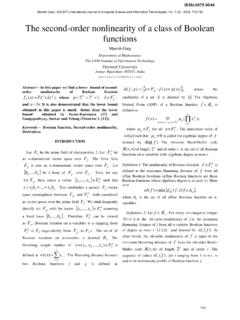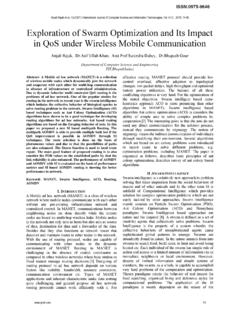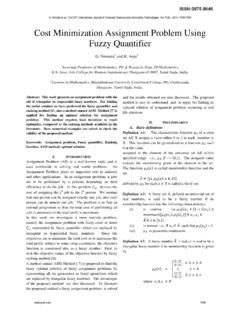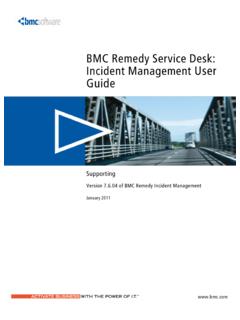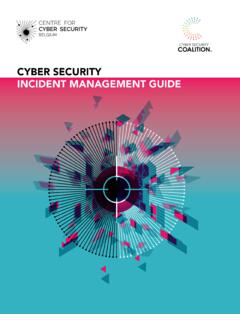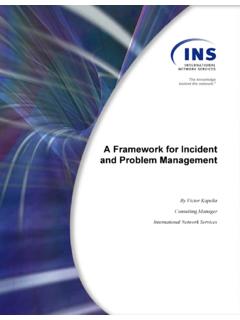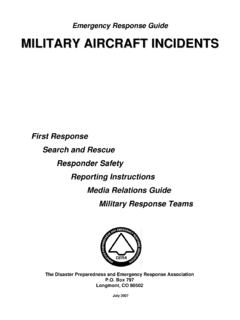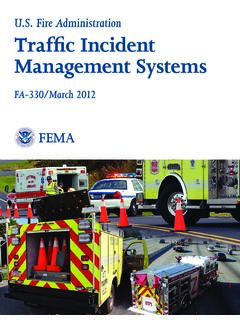Transcription of 17. Incident Management & Service Level …
1 Incident Management & Service Level agreement : An Optimistic Approach Bilas Ghosh Department of Computer Science and Engineering Vellore Institute of Technology, Vellore, India Abstract - In our increasingly complicated and distributed world, Incident Management and Service Level agreements (SLAs) are becoming a very critical tool for defining, measuring and managing the performance of services that comprise our companies. Whether an organization is a provider or consumer of services , stronger Service Level Management leads to better Service and lower costs. Yet most companies are less than satisfied with the business value they receive from their SLAs as well as the time and cost of monitoring and administering those agreements.
2 This paper is intended to help IT organizations gain greater value from their Incident Management & SLA Management efforts. Keywords Incident Management , SLA, Problem ticket, Change request, alert threshold, warning threshold, SLM, RCA. I. INTRODUCTION The primary goal of the Incident Management process is to restore normal Service operation as quickly as possible and minimize the adverse impact on business operations, thus ensuring that the best possible levels of Service quality and availability are maintained. Normal Service operation is defined here as Service operation within SLA limits. The role of an SLA is to clearly define Service delivery expectations, provide an objective means of assessing whether performance meets those expectations and identify the actions needed to improve performance.
3 This role is crucial in today s business environment where an interrelated web of companies receives and provides services to each other. Our suppliers performance affects our performance, which in turn affects the performance of our customers. If our performance falters, our customers can find plenty of competitors willing to take our place. In this light, it is easy to see the strategic advantage of well-tuned SLAs. II. FIRST THINGS FIRST WHAT IS Incident A. Incident An Incident is an unplanned interruption to an IT Service or reduction in the Quality of an IT Service . An Incident occurs when the operational status of a production item changes from working to failing or about to fail, resulting in a condition in which the item is not functioning as it was designed or implemented.
4 The resolution for an Incident involves implementing a repair to restore the item to its original state. Few key points about solving Incidents which has to be kept in mind are:- Incidents are properly logged Incidents are properly routed Incident status is accurately reported Incidents are properly prioritized and handled in the appropriate sequence Resolution provided meets the requirements of the SLA for the customer. III. Incident Management PROCESS This process should be used whenever an issue is reported where there is a loss of Service or lack of Service . For example, an user that receives an error message when trying to run an application, or automated alert got raised when automation process failed to build something which customer has ordered ( building a VM for a customer by cloning from pre-defined template) A.
5 Incident Raised This is the state that a new ticket starts when information regarding the Incident is entered. B. Incident routed to appropriate support team This is the starting point for all Incident tickets after they have been submitted. Tickets are submitted to either a queue which will be accessible to all members of the support group or directly to an individual based on definable auto-routing criteria. The auto-routing feature allows tickets to be directly routed to a SME (subject matter expert) based on requirement. C. Level 1 (L1) A support group folder may be the first owner for new tickets and a team member will be responsible for any unassigned tickets in this state. They will be investigating the Incident themselves to resolve it.
6 If it is out of scope for them (the error is not in the KEDB and has no resolution), they have the option of forwarding it to a more qualified member of the support team ( Level 2) if this would be more efficient. Before forwarding to Level 2 team, the following information regarding the Incident should be entered by Level 1 team members: Description of the issues Any troubleshooting activities they have performed Any other observations made. Urgency of the issue Bilas Ghosh / (IJCSIT) International Journal of Computer Science and Information Technologies, Vol. 4 (3) , 2013, Level 2 (L2) An Incident in this state has had initial investigation and troubleshooting performed without success. There are no documented processes to resolve the Incident or those processes have been attempted without success.
7 A team member from L2 should investigate and resolve this issue. E. Raise Problem Record If the Level 2 support person identifies a problem and thinks that a change to a configuration item is necessary to resolve the Incident , he should first raise a problem ticket. Performing the Report Problem action will move the Incident to the Under Investigation state and a new problem record that is linked to the initial Incident record should be raised. F. Raise Change Record This is performed when the Level 2 support person identifies that a change to a configuration item is necessary to resolve the Incident . G. Change Implemented / Completed After the change has be implemented successfully it would resolve the Incident . Now it requires attention from the support person responsible for the ticket.
8 This may simply mean contacting the Incident submitter to verify that that their issue has been resolved or may involve additional troubleshooting steps to complete required work. H. Incident Resolved This action is performed when the support team (either L1 or L2, as reuired depending on the issue) is able to restore Service to the customer either using known steps or through investigation and troubleshooting. I. Inform Customer/User The support person should inform and verify with the customer that they have resolved the issue. J. Close Incident Ticket Once the Incident has been resolved, it should be closed with proper closure code. K. Get RCA & Update Knowledge Base After the Incident is resolved, root cause of issue should be investigated, and knowledge database should be update for future reference.
9 L. Close Change Record / Close Problem Record: If a problem record and change record was opened to resolve the Incident , these should also be closed with proper resolution code. The whole process ( Incident Management Process) is explained using flowchart in the next page of this document. Red colour line indicates that the process is followed only when Problem record or change record is raised, otherwise not. Dotted line indicates that the Incident ticket is linked with problem record. IV. RESOLVING INCIDENTS Below process describes the basic structure of what actually needs to resolve an Incident : Inputs: The necessary information s required by 'Functional Group' to solve the issue. Functional Groups: It consists of the relevant teams involved to resolve the issue.
10 Output: When issue is resolved the information given out by the 'Functional Groups'. Fig. 1 Structure of resolving Incidents The points mentioned in the above process are defined below as indicated: Inputs: 1. Incident Number: This is the number generated when an issue is logged / reported in the platform. 2. Issue faced by customer / end user, observations. 3. Other necessary Technical Details required in solving the issue. Output: 4. Standard notification to the customer when issues are resolved and case is closed. V. Service Level agreement Here we will just describe what SLA is and how SLA is decided for different priorities of Incident tickets. A Service Level agreement is two things: a negotiation tool to balance the user demands against the resources available.

